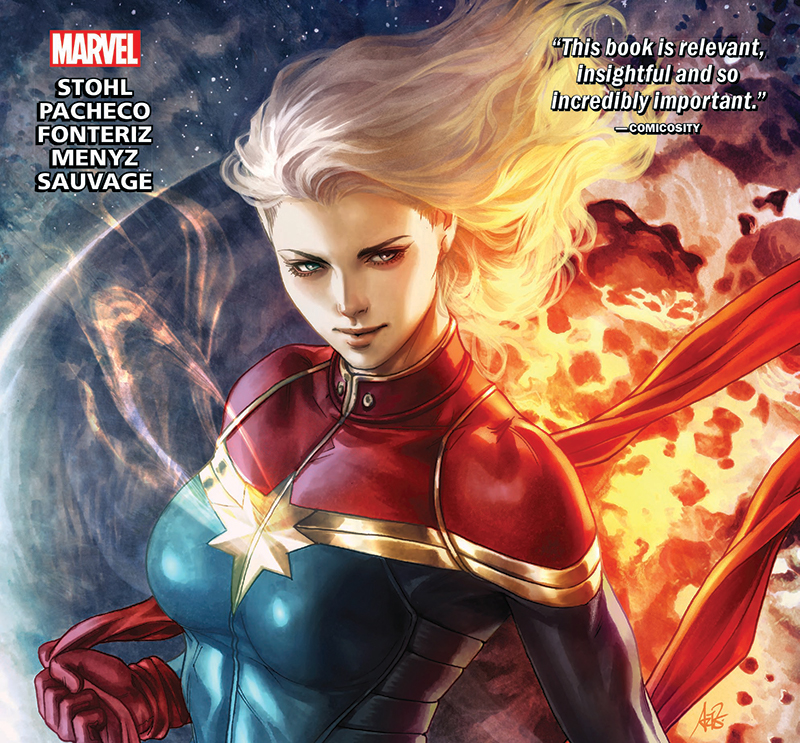
Before making her onscreen debut as the title character of the latest Marvel Cinematic Universe blockbuster, superhero Captain Marvel had an ever- changing history in the company’s comic books, starting with her debut as normal human Air Force officer Carol Danvers in 1968. Carol became the superhero known as Ms. Marvel in 1977, and took up the mantle of Captain Marvel (bestowed on numerous Marvel Comics characters over the years) in 2012. Along the way, her powers and origin story have been revised multiple times, most recently in the miniseries The Life of Captain Marvel, written by bestselling novelist Margaret Stohl ’89. Released starting in July 2018, nearly a year before the movie, Life clearly dovetails with the film, although Carol’s background in Life is different from the character’s movie origin.

Stohl removes Carol from the typical superhero
surroundings, focusing on the character’s
personal development.
Life starts out as more of a family drama than a superhero adventure, as Carol suffers from panic attacks, haunted by memories of her late abusive father, Joe. Prompted by her friend and fellow Avenger Tony Stark (aka Iron Man), Carol heads to her hometown of Harpswell Sound, Maine, to confront her past and reconnect with her mother, Marie, and brother, Joe Jr.
Most of the early conflicts in the series stem from Carol’s unresolved issues with her family: Carol is resentful of her mother for staying with a violent drunk of a husband, and Joe Jr. is resentful of Carol for maligning the memory of a man he loves and admires. When Joe Jr. gets in a car accident, Carol blames herself—and ignores Tony’s pleas to return to the Avengers. This is still a super- hero comic book, though, so by the third chapter a warrior from the alien Kree race, the source of Carol’s powers, has made her way to Harpswell Sound, and not on a friendly mission.
Even the series’ big superhero battles are about confronting past trauma and revealing family secrets. In fact, Stohl’s major revision to Carol’s origin story is to tie her powers to her family. Stohl doesn’t entirely write out the original Captain Marvel, Kree rebel Mar-Vell, but she downplays his involvement. This is a story about mother-daughter bonds and family legacy—themes that fit with the self-empowered version of Carol that Marvel (both in comics and in lm) has been pushing in recent years.
Stohl partners with some top-notch comics artists: Carlos Pacheco’s clean, clear and fairly traditional work anchors the broad superhero moments in the present, while Marguerite Sauvage’s somewhat cartoonier, more impressionistic work highlights the nostalgia and regret of the flashbacks to Carol’s youth. This is an emotional journey for Carol as much as it’s an exercise in fixing comic-book continuity, and having reliable, recognizable superhero art gives Stohl the freedom to take the story in new directions.
Now that Carol is enjoying a much brighter mainstream spotlight, creators have the chance to tell more varied stories with her, and with Life, Stohl takes advantage of that, removing Carol from the typical superhero surroundings and paying more attention to her mental state and personal development. Life also introduces elements that can be followed up in future Captain Marvel books. It’s a worthy companion piece to the movie, and another important building block in Captain Marvel’s ascent to the Marvel A-list.
Bell is a Las Vegas-based critic and a frequent reviewer for Amherst magazine.
Photo by: Joseph Moretti